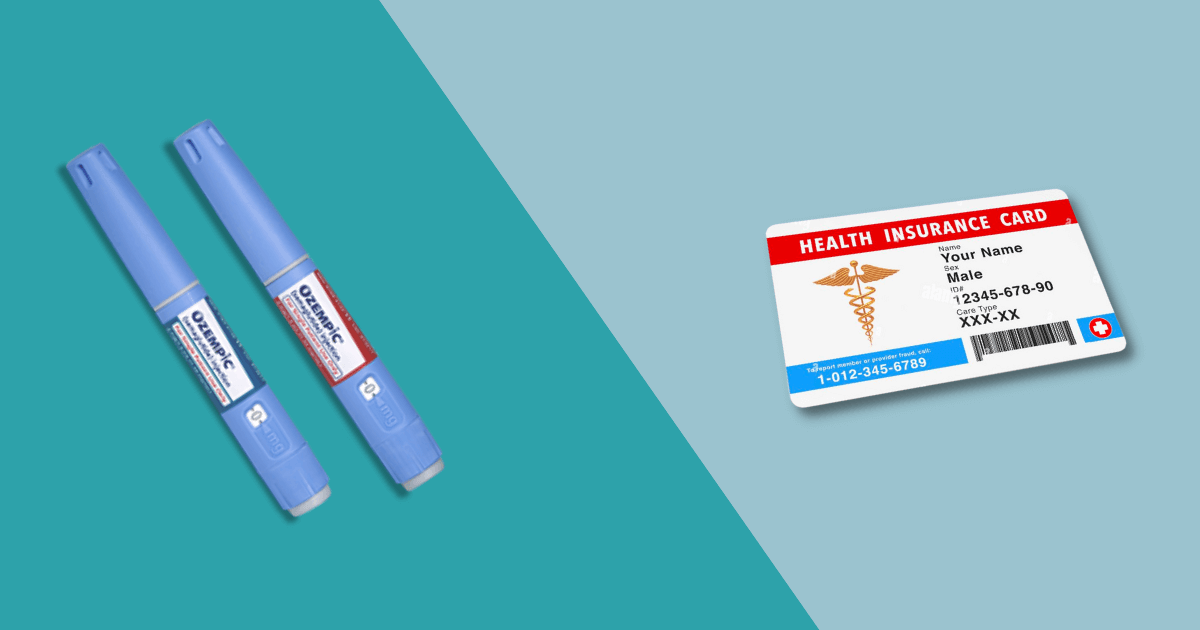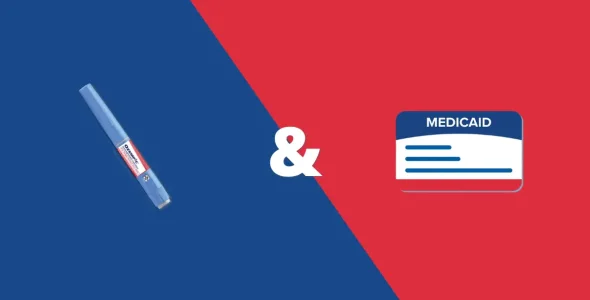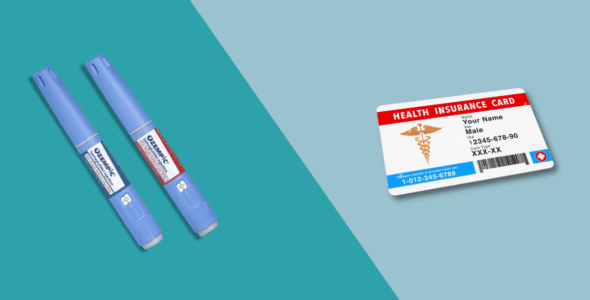How much does Ozempic cost with insurance?
Ozempic (semaglutide) is a popular brand-name drug used for treating type 2 diabetes and reducing the risk of major cardiovascular events. There is currently no generic of Ozempic available.
Ozempic cost with insurance will vary by insurance plan. Learn more about how to find out how much Ozempic will cost with your insurance plan and how to save money on this medication if you have not yet met the coverage gap, have high copays, or if your insurance plan does not cover this medication.
What is Ozempic used for?
Ozempic injection is available in the doses 0.5mg, 1mg, and 2mg. It is an injectable prescription drug used for:
- improve blood sugar (glucose) in adults with type 2 diabetes mellitus, along with diet and exercise
- reducing the risk of major cardiovascular events such as heart attack, stroke, or death in adults with type 2 diabetes mellitus with known heart disease.
It is not known if this medication can be used in those who have had pancreatitis. Ozempic is not for use in people with type 1 diabetes and it is not known if it is safe and effective for use in children under 18 years of age.
The active ingredient in Ozempic is semaglutide. Semaglutide is in a class of drugs known as GLP-1 receptor agonists and it works by helping your body release more insulin and improving blood sugar control.
Ozempic is not approved for weight loss. Some people may lose weight while taking Ozempic because the medication is intended to lower blood sugar levels and improve glycemic control. Some doctors may prescribe Ozempic for weight loss off-label. Wegovy and Saxenda are similar drugs to Ozempic and are approved for weight management.
Common Ozempic side effects include nausea, constipation, diarrhea, indigestion, low blood sugar levels, and reactions at the injection site. Speak to your healthcare professional if you experience any serious allergic reactions while taking this medication.
Is Ozempic covered by insurance?
Ozempic is covered by most Medicare plans and health insurance plans. It is possible that Ozempic is covered by your health insurance plan if it is prescribed by your doctor for the treatment of diabetes. Insurance coverage and reimbursement for Ozempic vary depending on the terms of each individual health insurance plan. Contact your health insurance company or speak with your pharmacist to verify coverage and reimbursement for Ozempic before you start treatment.
Insurance companies will use a drug formulary, which is an approved list of medications that are covered at tiered prices. If Ozempic is placed on a higher tier on the formulary, or if Ozempic is considered as a non-preferred drug in the formulary, that may result in a higher copay or no coverage at all for this medication.
As well, if your insurance plan has a deductible for prescription medications, you may be required to pay the full list price for Ozempic until you reach the coverage gap (out-of-pocket maximum).
You can also find out if Ozempic is covered by your insurance by logging into your health insurance company’s online portal and finding the “Price a Medication” link that is typically located in your Pharmacy Benefits section. Make sure to review any possible restrictions, including prior authorization, quantity limits, or step therapy. You should also check if you have a deductible, which requires that you pay the full list price for Ozempic until you reach the coverage gap (out-of-pocket) limit.
RELATED: Insurance and NiceRx
Get your Ozempic medication for only $49 per month
Get StartedHow much does Ozempic cost with insurance?
Many health insurance plans will cover all or some of the cost of Ozempic, however, the copay amount will vary by plan. You may still be responsible to pay for part of the Ozempic price, depending on your insurance policy’s terms.
Novo Nordisk offers an Ozempic savings card that can reduce the cost of Ozempic by up to $100 per month. Eligible patients who have private or commercial insurance, such as insurance received through an employer, may be eligible to pay as little as $25 for a 1-month, 2-month, or 3-month Ozempic prescription. Novo Nordisk states the maximum savings of $150 per 1-month prescription, $300 per 2-month prescription, or $450 per 3-month prescription). The Ozempic savings card is valid on prescriptions for a 1-month, 2-month, or 3-month supply, and can be used for up to 24 months from the date of activation. These eligibility requirements may change and it is recommended to check for the latest guidelines on the manufacturer’s website.
For those with high copays or without insurance coverage for Ozempic, there are alternative medications that can be considered. Speak with your healthcare provider about possible alternatives that are available as lower-priced generics including metformin, meglitinides, sulfonylureas, bile acid sequestrants, and alpha-glucosidase inhibitors. These lower-cost generic drugs are FDA-approved for lowering blood glucose. However, these alternatives may not be considered an adequate substitute for Ozempic.
You should not take any over-the-counter medications or supplements as a substitute for prescription medications to control blood sugar levels.
If you do not have insurance coverage for Ozempic, or if this medication is not covered by your insurance plan, the cost of Ozempic can be expensive. Novo Nordisk’s website states that the list prices (out-of-pocket cost) for Ozempic 0.25 or 0.5 mg (1 x 1.5-mL pen), 1 mg (1 x 3-mL pen) and 2 mg (1 x 3-mL pen) are $968.52 for a 30-day supply (around $213 per week depending on the prescribed dose).
Compare Ozempic alternative prices
| Brand-drug name (chemical name) | Average weekly cost |
|---|---|
| Adlyxin (lixisenatide) | $300 average weekly cost (1 dose daily) |
| Bydureon BCise (exenatide) | $190 average weekly cost (1 dose weekly) |
| Byetta (exenatide) | $190 average weekly cost (2 doses daily) |
| Victoza (liraglutide) | $210-310 weekly cost (1 dose daily) |
| Trulicity (dulaglutide) | $300 weekly cost (1 dose weekly) |
| Rybelsus (semaglutide) | $310 weekly cost (1 dose daily) |
Note: Prices are provided as estimates only and are subject to change.
RELATED: Ozempic vs Trulicity
How to save on Ozempic
With an estimated annual cash price of around $12,000 ($968.52 per month) without insurance, Ozempic is a very expensive medication, especially for people who do not have adequate insurance coverage. It can also be an expensive medication for those with insurance and high copays. Fortunately, there are options available to get Ozempic at a lower price:
- Check if your insurance plan will cover the cost of Ozempic.
- If you have private or commercial insurance, such as insurance received through an employer, you may be eligible to pay as little as $25 for a 1-month, 2-month, or 3-month Ozempic prescription. Find out if you are eligible for the Ozempic savings card. Restrictions may apply. Check the manufacturer’s website as terms and conditions may change.
- If your insurance plan will not cover the cost of Ozempic, or will only cover part of the cost and require you to pay a high copay, check around at multiple pharmacies for the lowest price for this medication. The local pharmacy doesn‘t always offer the lowest price. A study conducted by Consumer Reports estimates that the retail prices for medications can vary by as much as 10 times from one pharmacy to another.
- Try using an Ozempic coupon or prescription drug discount card.
- If your current insurance plan doesn’t cover Ozempic or has a high copay for this medication, look for a new health plan that covers Ozempic with a lower copay.
- Check if you qualify for enrollment in a patient assistance program offered by the manufacturer or other organizations.
- If eligible, enroll in Medicaid. Some Medicaid plans may cover the cost of Ozempic.
- Get medical advice from your healthcare provider about alternative treatment options. Ozempic is a prescription drug that belongs to a drug classification called GLP-1 agonists which are used to treat type 2 diabetes. There are several lower-cost alternative drugs that your healthcare provider may consider to help you save money on your treatment.
Medically reviewed
A medical professional has reviewed this article.


Jamie Winn, PharmD
Jamie Winn, PharmD
Dr. Jamie Winn received his Doctor of Pharmacy in 2002 from the University of South Carolina College of Pharmacy, Columbia, SC. Jamie is a medical reviewer for NiceRx.














